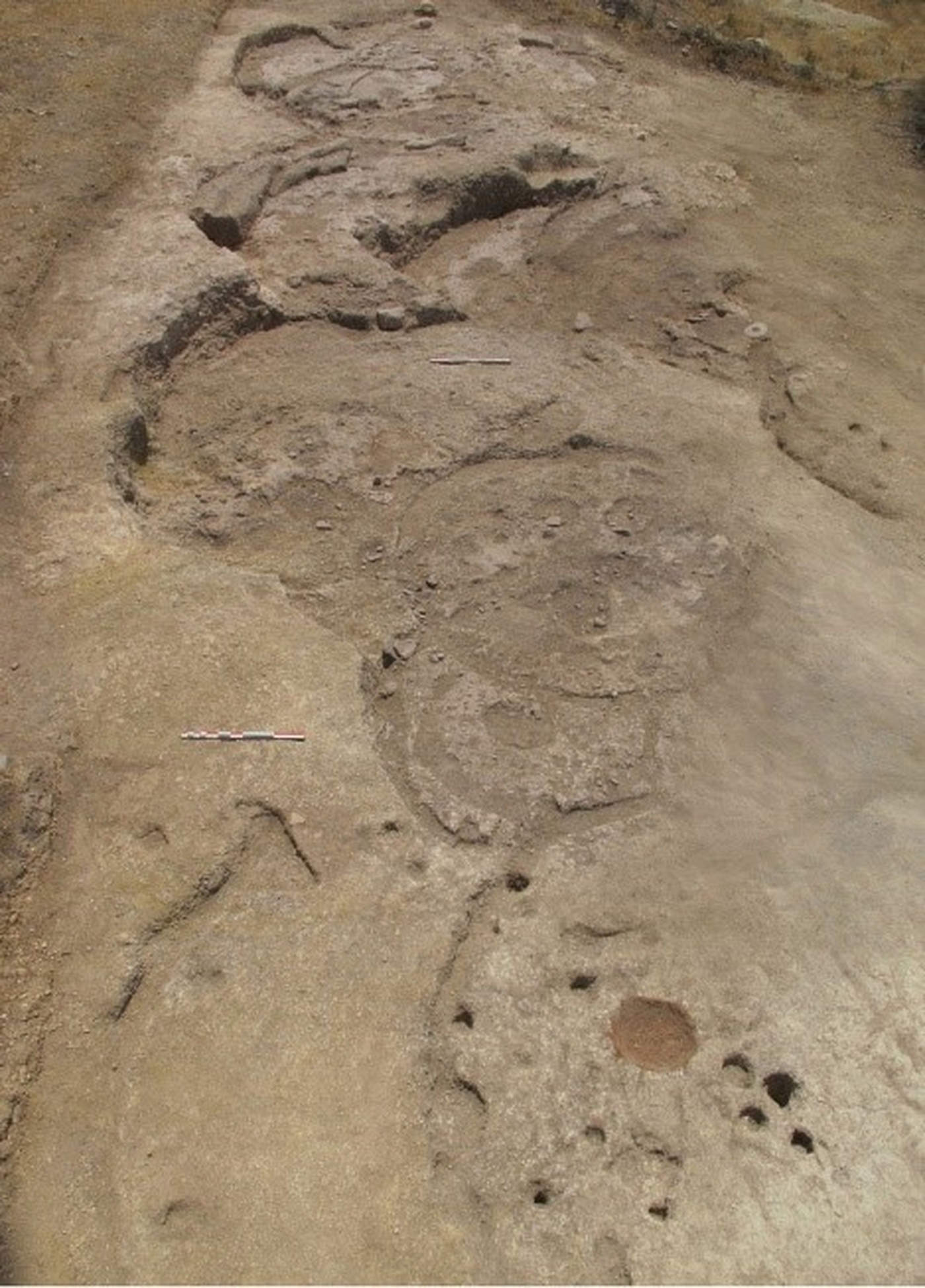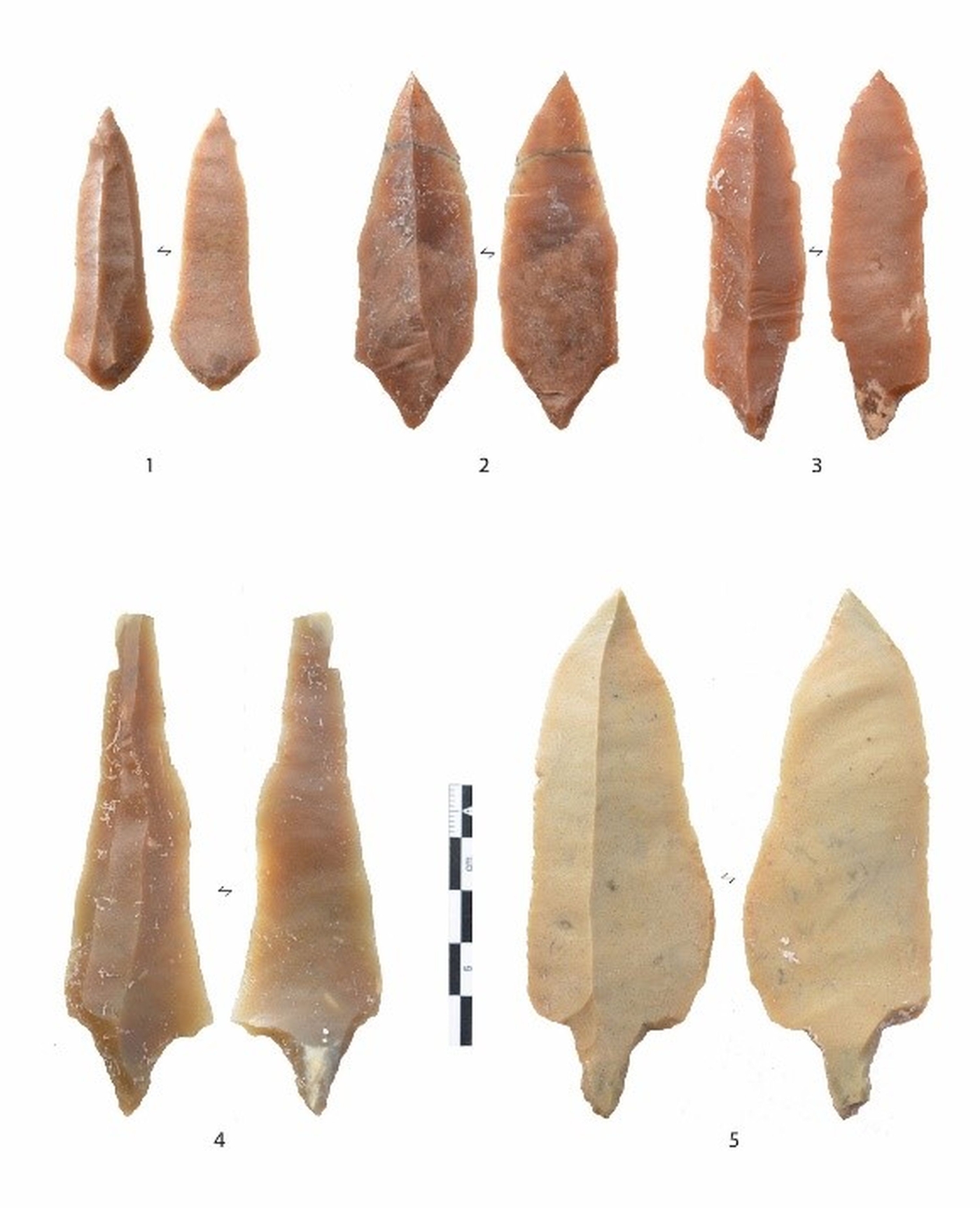Klimonas: the Neolithization of Cyprus
Située en Méditerranée orientale, Chypre offre un modèle miniature de la néolithisation dont les différentes étapes sont marquées par des influx réguliers venant de l’aire levantine toute proche. Klimonas, fondé au début du IXe millénaire par les premières sociétés d’agriculteurs originaires du Proche-Orient, correspond au plus ancien village néolithique actuellement connu dans ce contexte insulaire.

The aim of the field work begun in 2011 in Klimonas was to study a site contemporary with the Pre-Pottery Neolithic A (PPNA), a period about which little is known in Cyprus. Located in the south of the island, the site is revealing important data on the hunter-gatherer and early farming populations who settled in Cyprus in the early 9th millennium BCE.
A Neolithic village
The first test pits dug in 2009 soon revealed the importance of this site with an estimated surface area of half a hectare. An operation was planned from 2011 and the results confirmed the value of Klimonas for understanding the people who lived on the island immediately before the first Neolithic establishments of Pre-Pottery Neolithic B (PPNB). Research revealed occupations contemporary with Pre-Pottery Neolithic A (PPNA) from the continent, between 9000 and 8700 BCE.
The site corresponds to a village characterized by various buildings with circular ground plans measuring 4 to 6 metres in diameter. The buildings, constructed horizontally on the slope, have a peripheral foundation trench that served as a levelling course for walls built entirely from unfired earth.
A “community building"
In addition to these “habitations", there was also at least one large “community building". These large buildings believed to have been for collective use are interpreted as places for gatherings or ritual practices. They have also been found in Turkey, Syria, Iraq, Palestine and Jordan and date from the transition between the 10thand 9th millennia BCE. The Klimonas building shows that this model appeared at an early point in Cyprus. This discovery marks a major step towards assessing disseminations from the Levant as early as the PPNA.
A hunter-gatherer village
The archaeobotanical remains show that the people who lived in the village of Klimonas grew cereals, including emmer wheat which they probably introduced from the continent. More than 10,000 faunal remains indicate that they hunted the only major game then living on the island, a small boar previously introduced onto Cyprus by Epipalaeolithic hunters. Cats, introduced to catch mice, and domestic dogs lived in the village, in a commensal relationship with humans. Sea fish and shellfish were not eaten, unlike freshwater tortoises and crabs.
These economic questions are also addressed from the point of view of lithic industries. The large number of projectile points underlines the important role played by hunting for these populations. The tools include many sickle blades that, like milling instruments and cereal chaff used to make unfired clay walls, highlight the important role plants played in people’s diets. These different types of production bring to light the economic profile of the inhabitants of Klimonas: they were hunter-gatherers.
Personal decorations and symbolic objects
Personal decorations and symbolic objects shed light on the extent to which they were influenced by the arrival of continental ideologies or specific indigenous practices. Grooved stones, a cultural trait of the North Levant, or more rarely, stone vases, attest to the impact of continental practices. In contrast, stylised anthropomorphic figurines may be among the oldest anthropomorphic representations in the Cypriot Prehistoric record. Most personal decorative objects are made from seashells and in a Cypriot green rock, picrolite.
All of these questions, which remain largely open, have steadily led us to revise our image of how the Neolithic process was introduced onto Cyprus. In a period of new territorial conquests, the first farmers appear to have arrived from the continent with a complete and complex economic and social system from which the island then benefited. However, research at Klimonas provides a more complex picture of this process, the various facets of which will be developed in the monograph on the site, which is currently being put together.
The mission will now take a broader approach focusing on the coastal territory as a whole. Based on the surveys already made, we have been able to identify a certain number of new sites that may have hosted other sites contemporary with Klimonas and possibly older periods that could shed light on the 10th millennium in Cyprus, about which little is known.
The mission
The mission is supported by the French Ministry for Europe and Foreign Affairs (MEAE), the Ecole Française d’Athènes, the Centre national de la recherche scientifique (SEEG Limassol, INEE), the Laboratoire “Archéozoologie, archéobotanique" (UMR 7209, Paris) and the Laboratoire “TRACES" (UMR 5608, Toulouse).
The study of the site draws on the scientific expertise of L. ASTRUC (traceology, CNRS Paris), A. AVERBOUH (bone industry, CNRS Paris), S. BAILON (herpetofaunas, CNRS Paris), P. BEAREZ (ichthyofaunas, CNRS Paris), C. BENECH (geophysics, Univ. Lyon), T. CUCCHI (archaeozoologist, MNHN Paris), C. DELHON (phytoliths, CNRS Nice), B. DEVILLERS (geomorphology, Univ. Montpellier), Y. FRANEL (stratigraphy, INRAP, GO), B. GASSIN (traceology, CNRS Toulouse), L. GOURICHON (ornithofauna, CNRS Nice), B. GRATUZE (obsidian analysis, CNRS Orléans), R. HADDAD (sociological approach, Doc. Nanterre), M. LEBON (colourants analysis, MNHN Paris), F. LE MORT (anthropology, CNRS Lyon), L. MANCA (bone industry, P-Doc Paris), C. MANEN (stoneware, CNRS Toulouse), N. MAZUCCO (traceology, CESIC Barcelona), P. MYLONA (geoarchaeology, MNHN Paris), A. QUILES (dating IFAO Le Caire), S. RIGAUD (ornament studies, CNRS Bordeaux), J. ROBITAILLE (macro tools, Doctoral student Toulouse), N. SERRAND (malacology, INRAP Antilles), A. TABBAGH (geophysics, Univ. PM Curie Paris), M. TENGBERG (carpology, MNHN Paris), S. THIEBAULT (anthracology, CNRS Paris), O. TOMBRET (dating, MNHN Paris), R. TOUQUET (topography, INRAP IdF), J. WATTEZ (micromorphology, INRAP IdF), G. WILLCOX (carpology, CNRS Lyon), A. ZAZZO (dating, biogeochemistry, CNRS Paris).
Useful links
- Nouvelles données sur les débuts du Néolithique à Chypre, Actes de la séance de la Société préhistorique française de Paris, 18-19 March 2015





